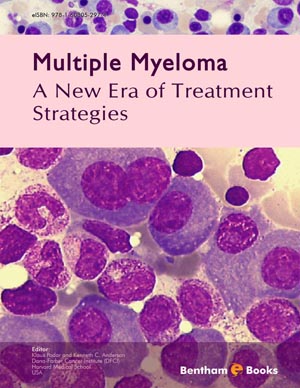Abstract
Multiple Myeloma (MM) is a clonal plasma cell malignancy with a highly heterogeneous genetic background, characterized by bone marrow (BM) plasmacytosis, production of monoclonal proteins, osteolytic bone lesions, renal disease, anemia, hypercalcemia, and immunodeficiency. The inclusion of thalidomide, bortezomib, and lenalidomide into conventional cytotoxic and transplantation regimens, first in relapsed and refractory and now also in newly diagnosed MM, has fundamentally changed treatment in MM during the last decade and steadily improved MM patient outcome.
Keywords: Clinical features, monoclonal gammopathy of unknown significance (MGUS), smoldering multiple myeloma (SMM), CRAB, staging (Durie-Salmon, International Staging System), upfront therapy, autologous stem cell transplantation (ASCT), maintenance therapy, salvage therapy, bone disease.






















